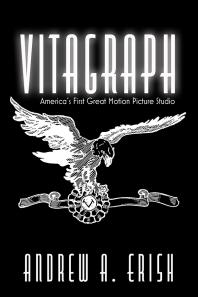(Ebook) Vitagraph : America's First Great Motion Picture Studio by Andrew A. Erish ISBN 9780813181219, 0813181216
The widely accepted history of the film industry acknowledges that the founders of Paramount and Fox invented the feature film, that Universal created the star system, and that these three companies (along with the heads of MGM and Warner Bros.) were responsible for creating the multi-billion dollar industry that has dominated the cinematic world. But like most inaccurate information, these were stories created by the victors. It's time to set the record straight. In The Vitagraph Story, Andrew A. Erish details the birth and development of motion pictures in America. Founded in 1897 by James Stuart Blackton and Albert Edward Smith, the Vitagraph Company of America (later known as Vitagraph Studios) was largely responsible for the birth of American cinema. The two English-born immigrants scraped together enough money to obtain their first original project and films which were made by the Edison Manufacturing Company but purchased illegally from a boyhood friend. (Edison machines were licensed to only sell machines and films to foreign clients.) The first Vitagraph shows included The Black Diamond Express, Edison's remake of a Lumière film. Edison projectionists offered an unadorned presentation of the film, but Blackton and Smith enhanced the experience. As Smith cranked the projector, the audience would see a train coming toward them. Blackton stood behind the screen simulating train noises, banging on sheets of metal, ringing a bell with a rope attached to one foot, blowing into a train whistle and pounding a bass drum. Afraid a runaway train was about to run them over, "those in the front rows would either dodge under the seats or go over backwards." Such showmanship would distinguish Vitagraph throughout its history from unimaginative competitors interested solely in turning a quick profit. Vitagraph was purchasing and projecting other producers' products because they hadn't yet shot many films of their own but public interest began to wane in films depicting day-to-day activities such as traffic jams or someone getting a shoeshine. Blackton and Smith were hired to film a scene that was incorporated into the play The Good Mister Best, which opened on Broadway on August 23, 1897. Their first successful venture was into newsreel films and they exploited the explosion of the American Battleship Main to produce their first hit film featuring real-life video of the emerging Spanish-American War. By the end of 1898, Vitagraph had established itself as a producer and exhibitor of moving pictures, nearly doubling its income from the previous year. In 1899 they were joined by another partner William "Pop" Rock. "Pop" Rock's levelheaded maturity saved the company. He talked Smith and Blackton into reorganizing Vitagraph in order to protect the business. The American Vitagraph, Inc. was incorporated on February 15, 1900 with assets totaling $6,000, the valuation of the physical equipment and films owned by the company. By 1907, Vitagraph Studios was one of the largest film studios in America producing dozens and dozens of films until 1925. These included the first film adaptation of Les Misérables, many films with the popular comedian John Bunny, The Military Air-Scout (the first aviation film), and the World War I propaganda film The Battle Cry of Peace. In 1925, Warner Bros. purchased Vitagraph and all of its subsidiaries for $735,000, about $10,657,000 in 2020 dollars and rewrote the history of cinema in America. A tell-all of the origins of the film industry, The Vitagraph Story challenges what we have been taught or think we know about film history.
*Free conversion of into popular formats such as PDF, DOCX, DOC, AZW, EPUB, and MOBI after payment.


